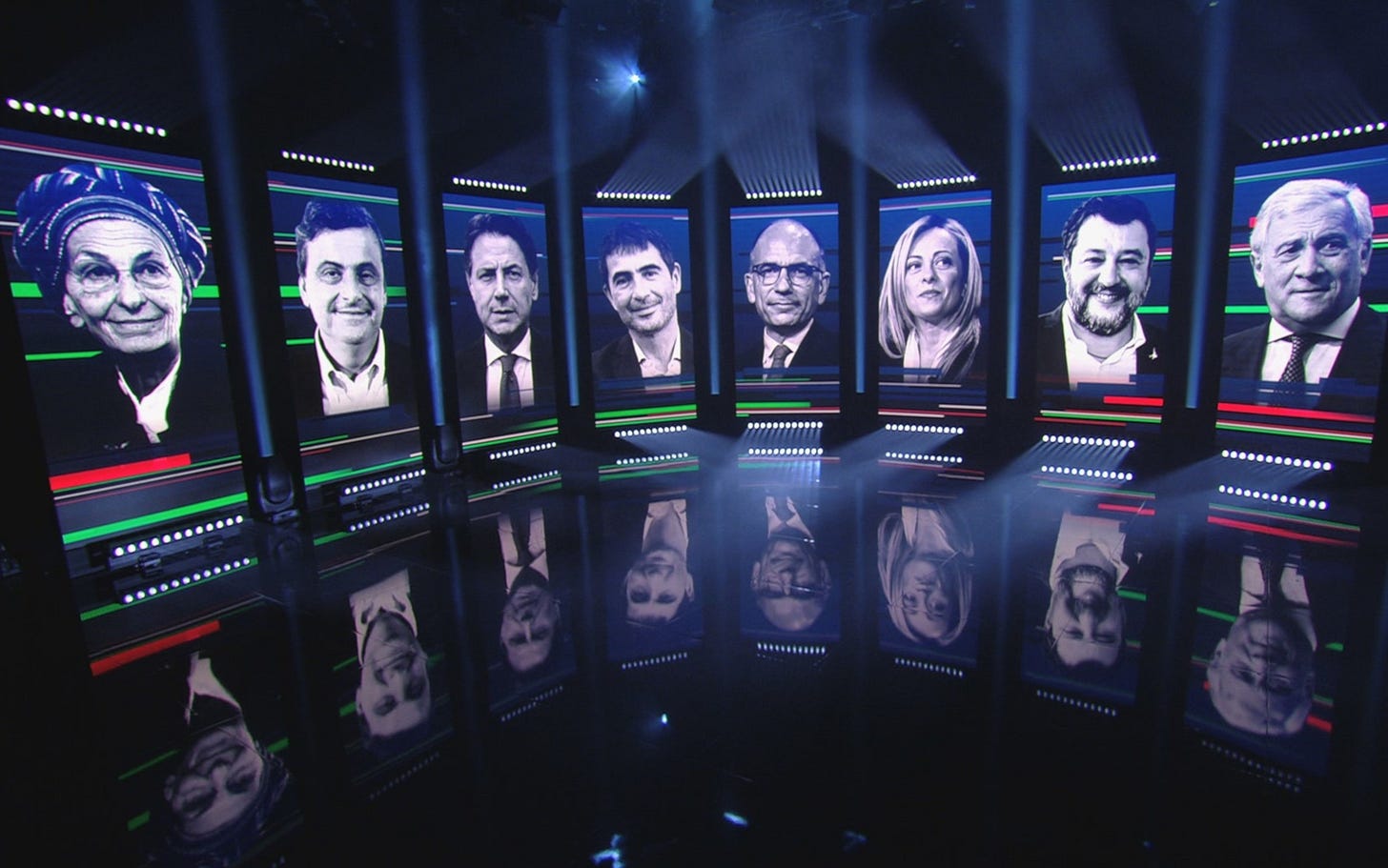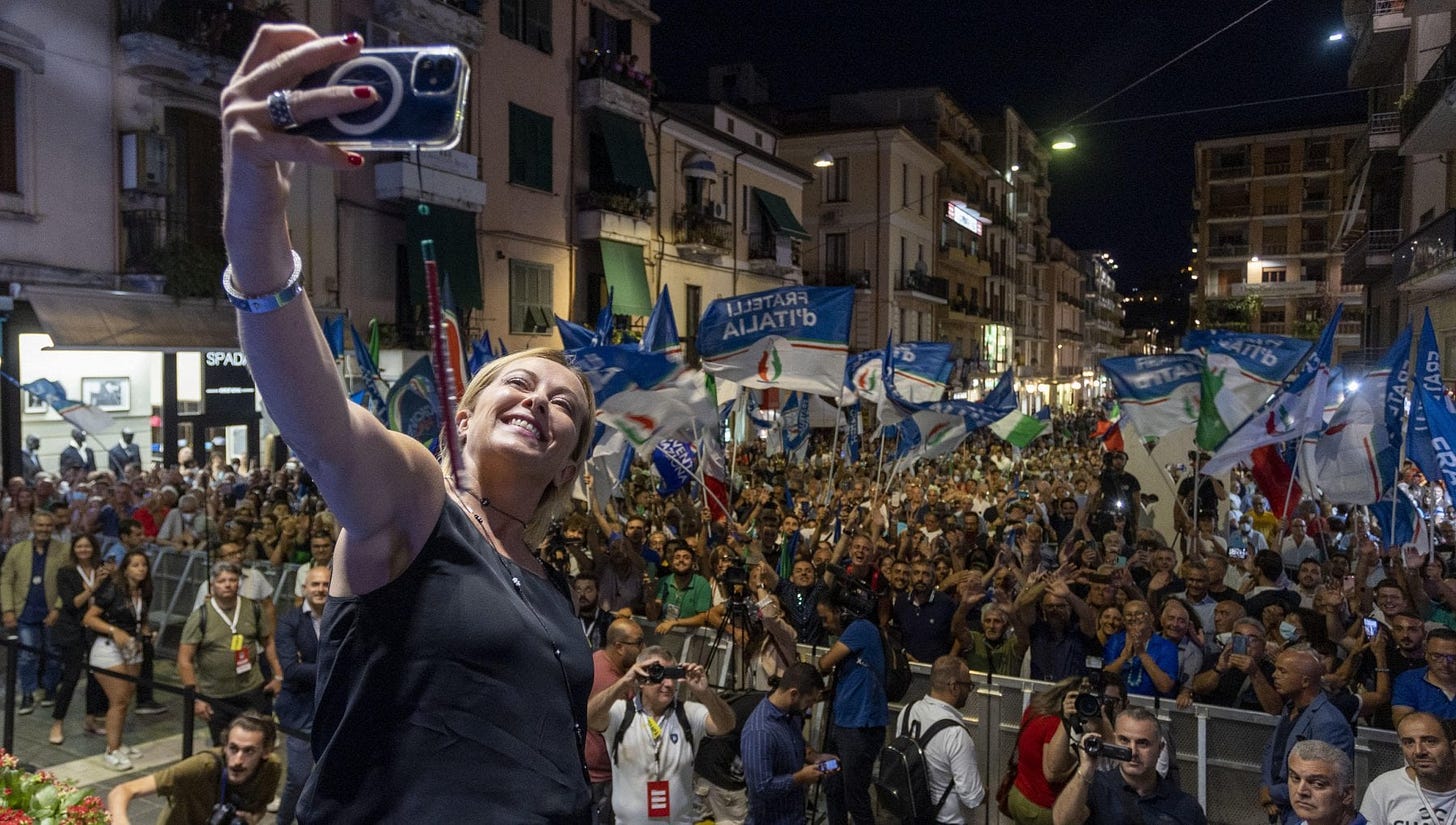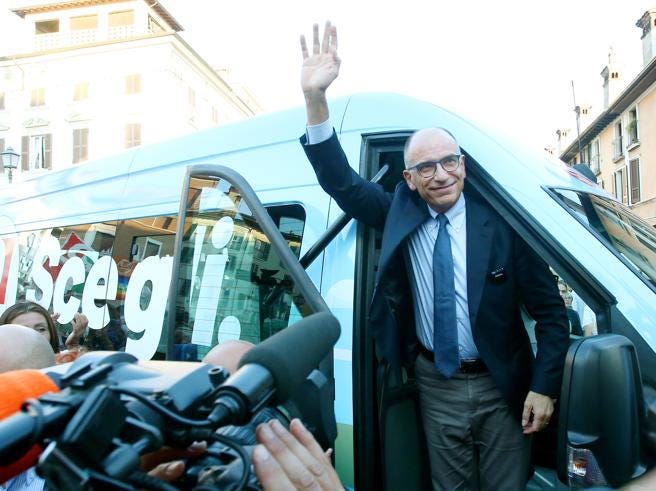Campaign snapshot: How did we get here and where are we going?
Analysing Italy’s campaign trail, the impacts on the electorate, and its consequences for the (future) political landscape.

With one week left before the elections and polls no longer allowed to monitor voter intention, it is worthwhile to pause for a minute and reflect on the dynamics, peculiarities and unprecedented developments of this electoral campaign in Italy. I spoke with Giulia Sandri, Associate Professor in Political Science at the Catholic University of Lille, to get a better idea of what have been the parties’ main political strategies to win their voters over in such a critical time period. She has followed the electoral campaign and monitored the parties, their internal organisation, the polls, as well as the electorate’s point of view.
Italy has witnessed a very fast-paced electoral campaign in the last few weeks. What have been the strategies of the main parties in presenting their programmes and persuading the electorate in such little time?
Seeing the specific time frame of the campaign, the parties have been compelled to develop complementary political strategies. On the one hand, we are seeing the physical campaign tour. For example, Meloni (Fratelli d’Italia) targeted fewer locations with larger audiences. Others like Salvini (Lega) and Letta (Democratic Party) decided to tour the entire Italian territory with both large and small audiences.
The thing that I find most interesting of this campaign is that it is greatly based on negativity. Instead of proposing specific solutions aimed at the worries of the population, most of the campaign is structured around differentiating themselves from other parties. In the case of the Third Pole (formed by the parties Azione and Italia Viva), this strategy is most evident because they must try and contrast their political identity from the PD, as both of its party leaders, Calenda and Renzi, built their political careers in the PD. Rather, their strategy is to attract moderates from the right.

What distinguishes this campaign from previous elections?
These elections are the first ones to take place in summer rather than in spring, which is a critical period, as normally government administrators and voters are less accessible. This is why ever since the government fell in July, the first month and a half was used to form the candidate lists and decide on the electoral alliances. Normally, these are created during a much longer time scale. The campaign trail has thus been far more active now than earlier, during the first week of September.
On the other hand, the parties have invested heavily on their social media presence compared to the 2018 elections. This is because they help to reach a wider audience with relatively lower costs. We have also seen the rather awkward videos posted by Berlusconi (Forza Italia), Calenda (Azione) and Renzi (Italia Viva) on TikTok to try and attract the younger and undecided electorate. Tens of thousands of euros were spent on sponsored social media messages that have a higher impact on the population, namely via Instagram and Facebook, which is actively used by 75% of Italians.
What is causing the growth of the Centre Right in the polls and especially of Giorgia Meloni?
First, and this is visible across Europe, there is a shift of the population’s opinions and sentiments towards more moderate and socio-economically conservative positions. Two, topics that were initially classified as “extreme” have become part and parcel of the political debate. In the case of Italy, we have for example the debate on limiting access to abortion, gay rights, adoption, euthanasia. Let’s keep in mind that in Italy, compared to other countries, many social and civil reforms have not yet been made, making this a fertile ground for the Right to set their positions. Third, Meloni’s Fratelli d’Italia is the only party that has remained in the opposition in the last two years. It is the only one that can objectively say, “I am not like the others, vote for me if you are not happy about how things are going.” Fourth, Meloni’s very effective strategy is that she understood what the atmosphere was before the fall of Draghi’s government and repositioned herself very quickly in a convincing way. She made a 180 degree turn on her position about being pro-NATO and the EU. We are talking about a party that has been very anti-EU until recently.
Both Meloni and Salvini are both right-wing populists, but while Salvini has a position as a “showman populist” who knows how to talk to the people and touches upon sensitive themes, such as immigration and taxes, Meloni is often perceived as a more ‘serious’ right-wing populist, and seen as a more capable administrator. The disagreement between Meloni and Salvini has a rather limited effect. They talk to two very different but complementary target groups of the Centre Right, convincing different people to vote.
Why is the Centre Left gathering less support?
The PD has been in the government very often in the last years, developing a strong precedent. Until now however, in its campaign, the PD has not been able to frame the debate around solutions, to go beyond the approach of ‘against’ the other parties. It began from the advantaged position of having a wide voter pool but fought on the defensive, which is not how one should place themselves if they are an incumbent party. PD’s Letta began criticizing Meloni’s agenda from day one.
The Third Pole: a new promise of a moderate coalition or the same old separatists?
There are so many differences across polls for how the Third Pole is doing that to be honest it is difficult to predict. Seeing how they managed the campaign, it would seem strange that they would separate now and create coalitions later, but the willingness to make alliances with the winner, potentially the Centre Right, may or may not take place.
Will undecided voters be easy to convince?
Unless something sensational happens, the undecided are usually influenced by the bandwagon effect, namely the poll-leading coalition. This is why polls cannot be published two weeks before the elections take place, but there is always a risk. The part of the undecided that will end up voting for the right will be linked to the dissatisfaction of the current situation in Italy, which is associated with the exiting government and the parties that support it.
Can you perceive a certain political bipolarism in these elections or is it more a fluid spectrum?
The notion of voting for a party because you identify with it is still there but it explains a very minimal side of the electoral behaviour. The campaign is clearly polarised between left and right even while the Third Pole and the Five Star Movement try to make their voice heard. The differences in values, preferences for constitutional reform and economic reform between who votes left and right is getting wider. But the true reflection of this ideological polarization can only be seen at the end of the elections.
As we can see from this snapshot, the next week will be critical. Parties have until 24 hours before the elections to put everything into their social media and their public and televised appearances. At this moment a bipolar (or tripolar) future of Italian politics remains up in the air. Will the undecided voters be able to bring it to the ground?




